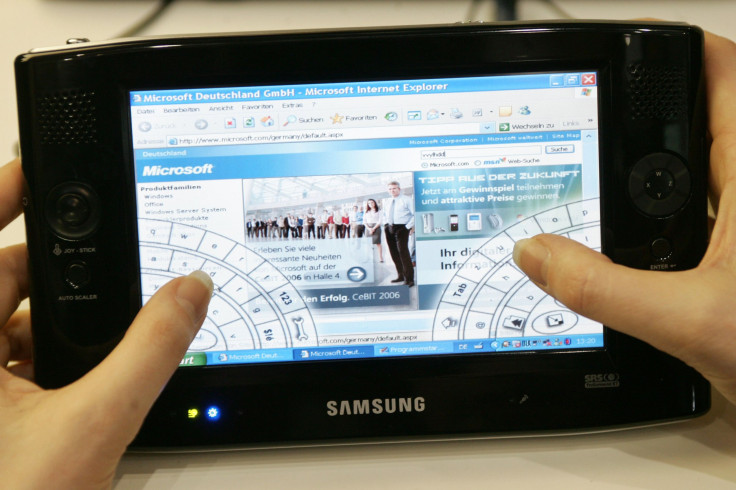Microsoft iPhone Keyboard Revives Failed 'Ultra Mobile PC' Tablet

Microsoft is making a keyboard for iPhones that revives one of the company's biggest failures. WordFlow for iOS, set to launch in the coming months, will support a one-handed mode that fans the keys out around a chosen corner, The Verge reports.
But eagle eyed Microsoft watchers may have spotted that the design described is actually nothing new. A similar keyboard first made its appearance in Windows Vista, intended to support a new class of PCs known as "ultra mobile PCs" (UMPCs).
UMPCs were tablet computers with touchscreens measuring between 6 and 10 inches. To make them easier to use, Vista introduced a new on-screen keyboard called DialKeys. The idea was that the thumbs would rest in the bottom corners, and the keys would fan out on screen around the thumb, so all the keys could be reached with either thumb.
The UMPC, codenamed "Project Origami," sounded ahead of its time at launch. In March 2006, Bill Gates took to the stage to outline his vision of a small tablet, about 10 sheets of paper thick, with a camera and all day battery life, costing around $800. In June of that year, the Samsung Q1 UMPC arrived, but it didn't quite live up to expectations.
Despite device makers' best efforts, the UMPC was dead in the water. CNet's review from June 2008 of an updated Samsung UMPC summed up the mood: "The new generation of similarly sized Netbooks do more and cost less than the Samsung Q1 Ultra Premium, putting another nail in the UMPC coffin."
By 2010, it was all over. Steve Jobs took to the stage in January to announce the iPad, a tablet that did what the UMPC was supposed to do, all in a sleeker, more attractive package. Six years on, it looks like Microsoft will finally be able to bring its DialKeys to a mass market product.
© Copyright IBTimes 2024. All rights reserved.






















